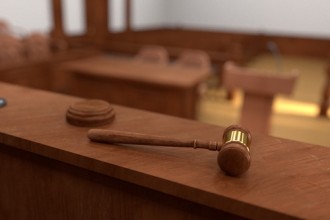September 22, 2016
It was Error Not to Consider Secondary Considerations, But They Wouldn’t Have Made a Difference
In ClassCo, Inc. v. Apple, Inc., [2015-1853] (September 22, 2016), the Federal Circuit affirmed a PTAB decision affirming an Examiner’s rejection of claims to a call-screening system that verbally announces a caller’s identity before the call is connected as obvious under 35 USC 103.
The Federal Circuit rejected the re-exam applicant’s argument that the combination of references was inconsistent with KSR, noting:
Contrary to ClassCo’s argument, KSR does not require that a combination only unite old elements without changing their respective functions. KSR, 550 U.S. at 416. Instead, KSR teaches that “[a] person of ordinary skill is also a person of ordinary creativity, not an automaton.” Id. at 421. And it explains that the ordinary artisan recognizes “that familiar items may have obvious uses beyond their primary purposes, and in many cases a person of ordinary skill will be able to fit the teachings of multiple patents together like pieces of a puzzle.” Id. at 420. The rationale of KSR does not support ClassCo’s theory that a person of ordinary skill can only perform combinations of a puzzle element A with a perfectly fitting puzzle element B.
The Federal Circuit concluded that the Board properly applied a flexible approach mandated by KSR.
The Federal Circuit did find that the Board erred in dismissing some of the objective evidence of non-obviousness, noting that it has previously explained that “when secondary considerations are present, though they are not always dispositive, it is error not to consider them.” The Federal Circuit said that a determination of whether a patent claim is invalid as obvious under § 103 requires consideration of all four Graham factors, and it is error to reach a conclusion of obviousness until all those factors are considered.
However, the Federal Circuit found that the Board correctly determined that much of the evidence deserved no weight because it did not have a nexus to the merits of the claimed invention. However, as to some of the evidence, there was a nexus. The Federal Circuit explained that nexus depends on whether the claims are commensurate in scope with the secondary considerations. The Federal Circuit noted that dependent claims contained the touted features, and that it was reasonable to assume that the underlying independent claim includes these features. Even though the independent claims encompassed other embodiments as well, the Federal Circuit further noted that it has not required a patentee to produce objective evidence of nonobviousness for every potential embodiment of the claim. A patent applicant need not sell every conceivable embodiment of the claims in order to rely upon objective indicia of nonobviousness.
However, despite finding error in the Board’s according no weight to the evidence of secondary considerations, the Federal Circuit found no error in the Board’s ultimate conclusion of obviousness. The Federal Circuit said that the value that the evidence of secondary considerations possesses in establishing nonobviousness is “not strong” in comparison to the findings and evidence regarding the prior art under the first three Graham factors.




































